#Margaret Calvert
Text

Margaret Calvert | Mr Jones | Dezeen
16 notes
·
View notes
Text


10 notes
·
View notes
Text

“A Roma, dopo la guerra, facevo il contabile in una casa cinematografica: la Rank Film. Non ero riuscito a inserirmi nell’industria edilizia e una cugina m’aveva trovato quel posto alla Rank. Qui lavoravo, o fingevo di lavorare, con cinque donne: in una stanza tappezzata con i ritratti di attori come James Mason, Patricia Neal, Margaret Lockwood, Phyllis Calvert. Forse influenzato da ciò, lasciavo che le cinque donne sgobbassero per me e passavo le giornate leggendo ad alta voce libri di poesie. Leggevo bene. Un giorno, la signora della stanza accanto mi disse:
«Ho un cognato che recita all’università, vuole che gli parli di lei?». «Magari, risposi». Guadagnavo 28mila lire al mese che se ne andavano in medicine per mio padre ammalato. Mai un cinematografo, mai uno svago, tutt’al più un po’ di biliardo. Mi iscrissi all’università, facoltà di Economia e commercio, per frequentare l’Accademia d’arte drammatica. Mi piacque. Recitai due anni mentre gli amici del quartiere mi prendevano in giro: «Ecché, se’ diventato frocio?».
Poi Luchino Visconti mi vide, per caso, e mi mandò a chiamare: gli serviva un giovane e pensava di scritturarmi. Dissi: «Quanto?». Rispose: «2.500 al giorno». «75mila al mese, Gesù!». Lasciai subito la Rank e per mesi non confessai nulla a mia madre: ogni mattina continuavo a uscire alle otto e a dire che andavo in ufficio. Mi ci volle coraggio per confessare la verità. Lei la prese bene ma sussurrò: «Figlio mio, durerà?». Lo ripete ancora: «Figlio mio, stacci attento. Con tutti i camerieri che hai, con quel che costa la vita. Un buon impiego sarebbe stato meglio». È convinta che, se fossi entrato alle Ferrovie dello Stato, ora sarei capostazione e avrei i biglietti gratis per la famiglia.
Io ho avuto tanta fortuna, solo fortuna. La fortuna che a Visconti servisse un giovanotto rozzo come me. La fortuna che la sua compagnia fosse la più importante e allineasse attori come Ruggero Ruggeri, Paolo Stoppa, Rina Morelli, Vittorio Gassman. La fortuna che Gassman se ne andasse e io prendessi il suo posto. La fortuna che mi offrissero il cinema, infine, grazie a questo nasino che detesto. Ma il successo di un attore non è quasi mai legato a ragioni nobili e serie. A me si addice la battuta che c’è in un film di Federico Fellini: «Ho troppe qualità per essere un dilettante e non ne ho abbastanza per essere un professionista»."
Marcello Mastroianni
Marcello in 8½ di Fellini
83 notes
·
View notes
Text

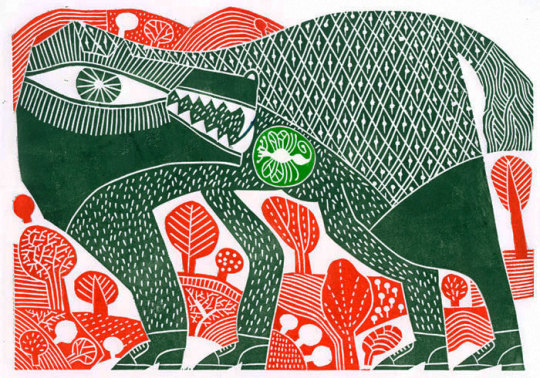



David Jones (b 1939) graduated from Liverpool College of Art in 1961 and it was here he first discovered his interest in printmaking. His tutor was the surrealist artist George Jardine. He won a John Moores travelling scholarship and spent time visiting various design studios across Europe. On returning to the UK he worked as assistant to graphic designers Jock Kinneir and Margaret Calvert. In 1965 -1967 he worked in Japan at Nakamoto International Agency, Osaka.
He returned to the UK and had a busy and successful career working freelance in graphic design, illustration and typography. He also worked as a visiting college lecturer at many of the countries leadings art schools. From 1979 he was a Senior Lecturer at Central Saint Martins (University of The Arts, London).
In the last twenty years he has returned to printmaking, in particular linocuts and wood engraving. He is influenced by Outsider art and Folk art. In 1989 he helped set up Raw Vision, a journal of Outsider Art. David is also a keen Semi-pro musician and plays the soprano saxophone. He hand prints his work in small editions and many of the images in his prints come from dreams.
https://rcaconwy.org/.../david-jones-rca-from-my-imagination
75 notes
·
View notes
Text

Little progress this week but Calverton has a road layout and more of a theme

I'm building a big muddy festival in one corner of the world, a la Glasto, because: showtime is my fav EP (sorry!) and, what could be simultaneously more Sims 3, and more British, than some rando coastal nowhere town being totally taken over by a bunch of celebs and live music and corruption
The name Calverton is a little nod to Margaret Calvert, who rly slayed designing all the iconography for the UK's roads and also the gorj typography for newcastle's metro. it was aping her designs in my cc world decor that made my caw files start to feel recognisably british
37 notes
·
View notes
Text

• Paganism is a term first used pejoratively in the fourth century by early Christians for people in the Roman Empire who practiced polytheism or ethnic religions other than Judaism.
• Neo-Paganism is a modern religious movement incorporating beliefs or practices from outside the main world religions, especially nature worship.
• It is Polytheistic in nature; worship of or belief in multiple deities, which are usually assembled into a pantheon of gods and goddesses, along with their own religions and rituals but can also just be a reverence for nature without any belief in deities.
A Brief Pagan Time-line:
• 300-353 Emperor Constantine orders the pillaging of Pagan Temples in the Roman Empire and begins to ban pagan rituals under threat of death
• 363 to 375 Emperor Julian and his next three successors lead a revival of Paganism in the Roman Empire while also tolerating Christianity.
• 381 Emperor Theodosius begins a war on Paganism. Visits to temples are banned, the sacred fire of Vesta is extinguished, the Olympics are banned, Pagan rituals are banned, and many holy Pagan sites throughout the Roman Empire are destroyed by force.
• 410 Rome is sacked by the Visigoths. Many Romans viewed it as punishment for turning away from the gods.
• 400s to 500s Paganism in the Roman Empire is forced to go underground, Pagan libraries are burnt, and it becomes official policy to hunt down and torture the remaining Pagans. Some Pagan festivals are incorporated in Christianity.
• 600s-1300s Many Pagan Resurgences occur while many nations go under the influence of Christianity
• 1300s to 1700s a series of witchcraft trials sweep through Europe leading to an estimated 40,000 to 100,000 deaths. How the trials relate to Paganism is debated.
• 1492 Christianity is first introduced to the Americas and the African Diaspora soon begins.
• 1780s to 1860s The Romantic Movement emerges in Europe. Its members loved nature and were influenced by folklore and mythology. Several of the Romanticists including Thomas Love Peacock, Thomas Jefferson Hogg, Edward Calvert, and Algernon Swineburne wrote poetry praising the old gods, built altars to Pan, and began to identify as Pagan.
• 1904 Aleister Crowley transcribes The Book of the Law while in Egypt and proclaims the establishment of the “new age” of the Æon of Horus.
• 1910 Rider-Waite tarot deck first published
• 1921 The Witch-Cult in Western Europe by Margaret Murray is published and the Witch-Cult Hypothesis is further popularized.
• 1939 Gerald Gardner is initated into the New Forest Coven, and believes it to be ancient.
• 1954 Witchcraft Today by Gerald Gardner is published and leads to the spread of Wicca.
• 1960s Interest in Paganism and new age philosophy explodes.
• 1980s The Satanic Panic occurs
• 1980s-2000s Neo-Paganism finds a new breath of life and worshipers
27 notes
·
View notes
Text
"A Roma, dopo la guerra, facevo il contabile in una casa cinematografica: la Rank Film. Non ero riuscito a inserirmi nell’industria edilizia e una cugina m’aveva trovato quel posto alla Rank. Qui lavoravo, o fingevo di lavorare, con cinque donne: in una stanza tappezzata con i ritratti di attori come James Mason, Patricia Neal, Margaret Lockwood, Phyllis Calvert. Forse influenzato da ciò, lasciavo che le cinque donne sgobbassero per me e passavo le giornate leggendo ad alta voce libri di poesie. Leggevo bene. Un giorno, la signora della stanza accanto mi disse:
«Ho un cognato che recita all’università, vuole che gli parli di lei?». «Magari, risposi». Guadagnavo 28mila lire al mese che se ne andavano in medicine per mio padre ammalato. Mai un cinematografo, mai uno svago, tutt’al più un po’ di biliardo. Mi iscrissi all’università, facoltà di Economia e commercio, per frequentare l’Accademia d’arte drammatica. Mi piacque. Recitai due anni mentre gli amici del quartiere mi prendevano in giro: «Ecché, se’ diventato frocio?».
Poi Luchino Visconti mi vide, per caso, e mi mandò a chiamare: gli serviva un giovane e pensava di scritturarmi. Dissi: «Quanto?». Rispose: «2.500 al giorno». «75mila al mese, Gesù!». Lasciai subito la Rank e per mesi non confessai nulla a mia madre: ogni mattina continuavo a uscire alle otto e a dire che andavo in ufficio. Mi ci volle coraggio per confessare la verità. Lei la prese bene ma sussurrò: «Figlio mio, durerà?». Lo ripete ancora: «Figlio mio, stacci attento. Con tutti i camerieri che hai, con quel che costa la vita. Un buon impiego sarebbe stato meglio». È convinta che, se fossi entrato alle Ferrovie dello Stato, ora sarei capostazione e avrei i biglietti gratis per la famiglia.
Io ho avuto tanta fortuna, solo fortuna. La fortuna che a Visconti servisse un giovanotto rozzo come me. La fortuna che la sua compagnia fosse la più importante e allineasse attori come Ruggero Ruggeri, Paolo Stoppa, Rina Morelli, Vittorio Gassman. La fortuna che Gassman se ne andasse e io prendessi il suo posto. La fortuna che mi offrissero il cinema, infine, grazie a questo nasino che detesto. Ma il successo di un attore non è quasi mai legato a ragioni nobili e serie. A me si addice la battuta che c’è in un film di Federico Fellini: «Ho troppe qualità per essere un dilettante e non ne ho abbastanza per essere un professionista»."
- Marcello Mastroianni

4 notes
·
View notes
Text
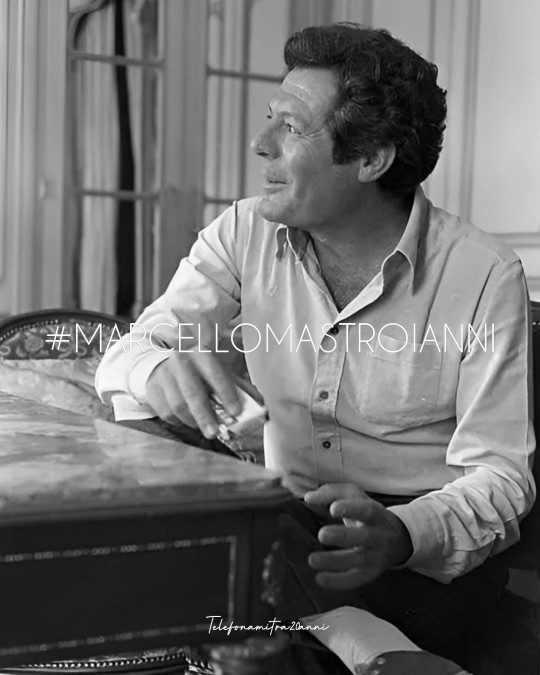
Te lo racconto (al telefono) io.
A Roma, dopo la guerra, facevo il contabile in una casa cinematografica: la Rank Film. Non ero riuscito a inserirmi nell’industria edilizia e una cugina m’aveva trovato quel posto alla Rank. Qui lavoravo, o fingevo di lavorare, con cinque donne: in una stanza tappezzata con i ritratti di attori come James Mason, Patricia Neal, Margaret Lockwood, Phyllis Calvert. Forse influenzato da ciò, lasciavo che le cinque donne sgobbassero per me e passavo le giornate leggendo ad alta voce libri di poesie. Leggevo bene. Un giorno, la signora della stanza accanto mi disse:
«Ho un cognato che recita all’università, vuole che gli parli di lei?». «Magari, risposi». Guadagnavo 28mila lire al mese che se ne andavano in medicine per mio padre ammalato. Mai un cinematografo, mai uno svago, tutt’al più un po’ di biliardo. Mi iscrissi all’università, facoltà di Economia e commercio, per frequentare l’Accademia d’arte drammatica. Mi piacque. Recitai due anni mentre gli amici del quartiere mi prendevano in giro: «Ecché, se’ diventato frocio?». Poi Luchino Visconti mi vide, per caso, e mi mandò a chiamare: gli serviva un giovane e pensava di scritturarmi. Dissi: «Quanto?». Rispose: «2.500 al giorno». «75mila al mese, Gesù!». Lasciai subito la Rank e per mesi non confessai nulla a mia madre: ogni mattina continuavo a uscire alle otto e a dire che andavo in ufficio. Mi ci volle coraggio per confessare la verità. Lei la prese bene ma sussurrò: «Figlio mio, durerà?». Lo ripete ancora: «Figlio mio, stacci attento. Con tutti i camerieri che hai, con quel che costa la vita. Un buon impiego sarebbe stato meglio». È convinta che, se fossi entrato alle Ferrovie dello Stato, ora sarei capostazione e avrei i biglietti gratis per la famiglia.
Io ho avuto tanta fortuna, solo fortuna. La fortuna che a Visconti servisse un giovanotto rozzo come me. La fortuna che la sua compagnia fosse la più importante e allineasse attori come Ruggero Ruggeri, Paolo Stoppa, Rina Morelli, Vittorio Gassman. La fortuna che Gassman se ne andasse e io prendessi il suo posto. La fortuna che mi offrissero il cinema, infine, grazie a questo nasino che detesto. Ma il successo di un attore non è quasi mai legato a ragioni nobili e serie. A me si addice la battuta che c’è in un film di Federico Fellini: «Ho troppe qualità per essere un dilettante e non ne ho abbastanza per essere un professionista».

#marcello mastroianni#best actor#movies#federico fellini#latin lover#telefonamitra20anni#mastroianni#racconti al telefono#storytelling#biografia#biografy
5 notes
·
View notes
Text
Notes on Colour Theory Seminars
Pantone
Pantone standard colour matching system, used by over 10 million designers, ensures standardisation
Pantone uses the CMYK process
As of 2023 there are 2390 colours in the Pantone system
By pairing grey as an accent with other colours it increases the viewers perception that the other colour has a metallic taint

My favourite Pantone colours of the year
2022, Very Peri, 17-3938
2019, Living Coral, 16-1546
2017, Greenery, 15-0343
2014 Radiant Orchid, 18-3224
2012, Tangerine Tango, 17-1463


Use of Colour in the Real World
London Underground uses coloured lines that are all horizontal, vertical or diagonal at 45 degrees to create a simplified map of all the stations and stops that’s easier for the user to navigate

Road Signage
Brown indicates areas of historical interest, white for place names, yellow for roads
In the late 1950s, Jock Kinneir and Margaret Calvert, two British graphic designers, created the signage from the UK motorways and created new fonts for them. This signage was later adopted by Ireland too.
Contested Spaces
Derry is a prime example of a contested space in Ireland. On the Bogside (mainly catholic area) of Derry, the tricolour is widely used as a symbol of Irish nationalism
While on the Waterside, the Loyalist (Protestant) area, the use of Union Jack colours and orange dominate the area.


Our postboxes were originally red under British rule, 1922 when we gained our independence, painted green
Use In Fine Art
International Klein Blue
Developed by Yves Klein
Heavy reliance on ultramarine
Copyrighted the colour in 1958
Used Klein Blue as a central component in his works
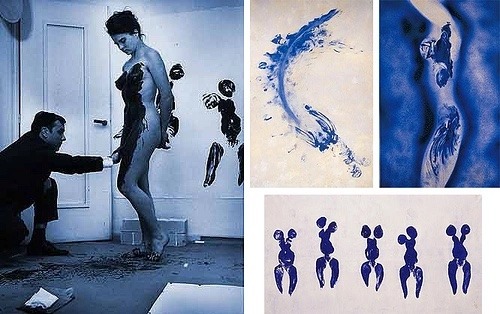
Vantablack
absorbs 99.96% of light
When lights hits the pigment it becomes trapped inside it
Developed for military purposes by the company NanoSystems
Anish Kapoor bought the colour from NanoSystems

The Worlds Pinkest Pink
In 2016 Stuart Semple created the world’s “Pinkest Pink” in retaliation to Kapoor buying the rights to Vantablack
Semples pink is available to everybody except Kapoor, who is banned from buying it
Must sign a contract when you’re buying it that you’ve no affiliation with Kapoor

2 notes
·
View notes
Text
Typography seminar one and two: Lorraine;
After attending tutorials I realized that my reflections were a little lengthy. From the first seminar I learned that typography is how type is arranged on a layout only came in after the press. I learned all about the different types of type and font there were and where they originated from.I learned how fonts trace back to Ancient Rome, how typography became accessible to the masses->inexpensive, how italics were used for extra space rather than design. I learned how font shows appreciation for each other->communicate, font is used for safety->road signage,bus times,clothes,menus.I learned about different font artists the most prominent being Margaret Calvert she created the motorway signage along with Jock Kinneir.
In the second seminar I learned about how the use of different materials creates different fonts and how they can be effective for different reasons such as jacobs using biscuits as a form of type for their advertising
4 notes
·
View notes
Text
The Murder of Victoria Cafasso
The 1995 unsolved murder of Victoria Cafasso has left her family, police, and the general public baffled. The brutal manner and circumstances of her death have provided more questions than answers. Who killed the twenty-year-old Italian tourist? Was she a victim by chance, or did someone maliciously kill her with intention? Even after all these years, these questions have yet to be answered. The events surrounding her murder, the police investigation, and the main three suspects are the elements that hold together her story and are the only means of discovering who killed Victoria Cafasso.
In 1995, Victoria Cafasso was a twenty-year-old Italian law student. After a couple of years of intense study, she was burnt out and needed a break. To solve this dilemma, she decided to travel and visit family (Worthington, 2020). She first visited her grandmother in England, and then made her way to Tasmania, Australia. Here, she planned to stay with Simon de Salis, a cousin whom she had never previously met.
Cafasso arrived in Tasmania on October 6, where she met de Salis at the airport. The two then drove to the small beach town of Tasmania, which had a population of around 350 residents. Before going to their rental cottage, de Salis introduced Cafasso to three locals. At this interaction, Cafasso met a young local woman named Hilda Jackson. The two women would become friends and spend an afternoon together two days before the murder; Cafasso visited Jackson’s house, where the two talked for hours. Cafasso also attended a birthday party with her cousin and took several walks on the beach. Outside of these few events, Cafasso did not have any other contact with other people (Holden, 2015). This would later become a factor in her murder investigation; since she spent limited time with a small number of people, the police were limited in finding connections between the few she did encounter and her death.
Cafasso had been in Tasmania for a mere five days before she was murdered. On October 11, she ate breakfast with de Salis before leaving around 9 a.m. for her usual daily walk and to spend some time at the beach (Holden, 2015). When she left, she was dressed to go to the beach and was carrying a beach bag that she had borrowed from de Salis. Before her body was discovered at 1:30 p.m., Cafasso was sighted by anywhere from one to six people. Although there is some controversy about this number, the medical examiner’s report stated, “On reviewing the evidence, some six witnesses gave various conflicting accounts of the deceased’s movements from “Larby Cottage” to Beaumaris Beach on the day of her death” (Jones, 2005, p. 27). The only confirmed person to see her was a woman named Iris Smith, who saw her sunbathing on the beach at 9:55 and 10:10 a.m. (Calvert, 2014). According to reports, no one else saw Cafasso for the next few hours. This lack of witnesses has caused issues for the police in creating an exact timeline for the murder.
Cafasso's body was found at the estimated time of 1:30 in the afternoon. Margaret McIntyre, a local Tasmanian, was walking her dog on the beach and came face-to-face with the gruesome scene. Upon this discovery, McIntyre sought help from two men who lived nearby. One man stayed with Cafasso's body while McIntyre and the other man called for help (Worthington, 2020). Police arrived around ten minutes later, at which point they found her deceased body. Cafasso had been stabbed twenty-one times, had multiple bruises and defense wounds, and was missing three teeth. The medical examiner concluded that "The death of the deceased was due to exsanguination due to multiple stab wounds including wounds to the right atrium" (Jones, 2005, p. 101). The police were presented with a horrific murder and limited clues with which to work this case.
The Tasmania police force had a large responsibility for this murder. They sectioned off the crime scene with police tape and ordered for Cafasso's body to be covered with a tarp. According to the man who stayed with the body before the police's arrival, there were two footprints located a few meters near the crime scene; in spite of this, the police have maintained that no such prints were present and therefore, never made a note of this (Holden, 2015). However, they did discover several other prints, some of which led directly to the body and others that were present at a nearby bank. A caste of one of these prints was made. This would later come back to cause controversy concerning the investigation.
The body of Cafasso was found in an odd manner. At the time of her death, she had been wearing a white and blue floral bikini. When her body was discovered, her bikini top was pulled up to expose her breasts and her bottoms were missing. They have never been recovered to this day. Despite this condition, there were no signs of sexual assault on Cafasso's body (Uibu & Costelloe, 2020). Most of her belongings, including her clothing, shoes, and beach bag, were found about fifty meters away from her body. However, her t-shirt and necklace were missing and have yet to be found. The removal of Cafasso's swimsuit bottoms caused the police to believe that her body was moved, most likely by her killer, and dumped into the ocean in hopes of being discarded and evidence being hidden (Holden, 2015). Unfortunately, these hopes were granted, and any potential forensic evidence was washed away by the water (Wilson, 2020).
Since the murder, there have been many controversies regarding the initial police investigation. Firstly, the body was not preserved as it should have been and was moved before it was covered by a tarp, which was not provided by law enforcement. Secondly, the police allegedly did not properly section off the crime scene; they taped off a small section of the beach rather than doing so in its entirety. This could have resulted in a loss of potential evidence and possible contamination (Uibu & Costelloe, 2020). Furthermore, proper photo and video evidence was not captured, and the forensics team did not appear at the scene. Finally, only one footprint caste was made and stored as evidence, with disregard for any others although additional footprints were noted (Holden, 2015). Since these controversies have arisen, the Tasmania police force has acknowledged its past mistakes and hopes to move past them to solve the case.
An unsolved question circulating the police force is how the killer arrived and left the scene. Although there were several alleged witnesses who could have potentially seen or heard something, no one knows how the killer performed the murder undetected. Additionally, the body being moved is another baffling piece. While it is believed that the murderer moved Cafasso, some have considered it difficult for a single person to have dragged the body down the piece and placed it into the water (Holden, 2015). The most common theory is that the body drifted into the ocean but was washed back to shore by the tide. This explains why it was found so close to the shore (Worthington, 2020). These components make this case increasingly confusing and difficult for the police to solve.
Although the police have not released any names to the media or public, they believe they have constructed an accurate profile of their suspect. The killer is said to be a male who is a family man and lived in the area at the time of the murder. It is unlikely that he still lives in the area or that he is a serial killer. The police believe there to be at least two people with knowledge about the murder: the murderer and at least one other person. They say that the killer must have confided in someone about his actions or at least have discussed the case with someone close to him. They urge anyone who believes they know the killer to come forward to the police, regardless of how small any information may seem (Worthington, 2020).
Throughout the years, the police have interviewed a minimum of three hundred people. Because of the small population of Tasmania, almost all of its citizens were considered potential suspects (Uibu & Costelloe, 2020). However, in her book Tasmania’s Beaumaris Beach Mystery: What Happened to Nancy and Victoria?, author Melanie Calvert presented three possible suspects, all of whom are still considered valid.
Calvert’s proposed suspects are referred to as the fisherman, the biker, and the doctor (Calvert, 2014). The fisherman's name is Tony Kirkland, who had previously had a restraining order against him for inappropriate interactions with a minor. He also had an encounter with Hilda Jackson which left her feeling uncomfortable and wary of him. This also resulted in her naming him as a potential suspect. The biker's name was Gary Holmes, often referred to as "Stretch” Homes. He was known in the community for his violent outbursts and was noted to have discussed the murder with many people. To raise more concern, he had allegedly bragged about matching the police’s profile of the killer. On the day that Cafasso was killed, Holmes was described as acting strangely. This behavior caused his name to be given to the police (Worthington, 2020). Roman Hasil is known as the doctor. He was without an alibi for the night of the murder, was seen nearby the crime scene, and was said to have scratches on his face during the days shortly after the murder. Additionally, he lived nearby the beach where Cafasso was murdered and moved shortly after the police investigation was underway (Holden, 2015).
Although these men have been publicly named as suspects, there are minuscule leads that link any of them to the investigation, and the current investigators of the case believe that the killer is not any of these men. Another reason to note is that the police did not claim at any point that these men were suspects; instead, it was Calvert who mentioned them in her book. This weakens the argument that any of the men in question could have been involved.
One of the lead detectives has claimed that he believes he knows who committed the murder. Now, he says, they simply need the right evidence to corroborate his idea (Uibu & Costelloe, 2020). Regardless, the investigators have yet to name a suspect or make any arrests.
According to the Tasmania police force, there were up to fifty people to have visited the beach on October 11. This has caused further complications with the police investigation. Firstly, the number of people who could have appeared on the beach would have caused additional contamination and possible DNA evidence. This has sparked more criticism for the investigation and has raised concern over the lack of effort from the initial inspection and sectioning off the crime scene (Uibu & Costelloe, 2020). Secondly, this large number of people has resulted in confusion in narrowing down suspects. None of these people have ever come forward to share information. When asked by the press about this, the medical examiner stated, “I still find it particularly incredible that on that particular morning that over 50 people visited that beach and not a single person saw or heard anything" (Worthington, 2020, p. 27). Therefore, this piece of information has only caused more work and an increased number of questions for the police.
At this point in the case, the police are still confident in their abilities to capture the murderer of Victoria Cafasso. They have acknowledged their mistakes from the initial investigation but resolved that they have and are working to overcome them. Currently, the detectives are working with a researcher from the University of Tasmania in order to use modern technology to further their investigation and hopefully provide new leads (Uibu & Costelloe, 2020). When asked about this, a lead investigator has stated, "We have provided an exhibit from the case that may yield new evidence" (Worthington, 2020, p. 44). They are also currently offering a $100.00 reward to anyone who comes forward with information that leads to an arrest. This information goes to show that the police are making a conscious effort towards making an arrest (Uibu & Costelloe, 2020).
The family of Victoria Cafasso has never given up hope and still desires answers. A memorial service was held for Cafasso, and the family has had to come to terms with her death. However, her legacy lives on (Holden, 2015). After all these years, her family holds on to the hope that justice will be served and that they will receive answers as to what exactly happened to their beloved daughter. Launceston CIB Detective Inspector Kim Steven, who has worked closely on the Cafasso case made the statement, "For quarter of a century the murderer has lived with this on their conscience. That must consume them. They have the opportunity to provide closure to Victoria's family. It's not too late" (Worthington, 2020, p. 46). This statement serves two purposes. Firstly, it provides hope to Cafasso's family and the public that justice will one day be served. Secondly, it is directed towards the murderer and raises the question of how long he can live before his conscience can no longer handle his secret.
Will the police ever capture the killer of Victoria Cafasso? There is yet to determine whether she knew her killer or if she was an unfortunate victim of chance. The attack almost appeared too brutal to be random, but the police have yet to deliver answers. Cafasso’s case and its investigation have been ongoing for the past twenty-five years, and the police remain determined to arrest her killer. Over the years, new detectives have been assigned to the case in order to gain new insights in hopes of solving it sooner. The Tasmania police force has acknowledged its past errors in the investigation but is continuing on using the resources they currently have; they plan to move forward with determination. They are armed with all the information needed to solve this case and provide the family with the answers they deserve. Most importantly, the goal is for justice to be served for Victoria Cafasso.
References:
Calvert, M. (2014). Tasmania’s beaumaris beach mystery: What happened to nancy and victoria? CreateSpace Independent Publishing Platform.
Holden, L. (2015, October 11). Who killed victoria cafasso? The Sydney Morning Herald. Retrieved from https://www.smh.com.au/national/who-killed-victoria-cafasso-20151008-gk41h0.html
Jones, D. J. (2005, March 23). Coronial findings: Record of investigation into death. Magistrates Court of Tasmania. Retrieved from https://www.magistratescourt.tas.gov.au/about_us/coroners/coronialfindings/c/2005_tascd_125_-_cafasso,_victoria_anna_elizabeth
Uibu, K., & Costelloe, A. (2020, October 4). Fifty people visited the beach the day victoria cafasso was murdered — her killer hasn’t been found. ABC News. Retrieved from https://www.abc.net.au/news/2020-10-04/whoever-killed-victoria-cafasso-25-years-ago-is-still-out-there/12712820
Wilson, A. (2020, October 15). The mercury explores east coast cold cases of nancy grunwalt and victoria cafasso in exclusive crime series. The Mercury. Retrieved from https://www.themercury.com.au/remote/check_cookie.html?url=https%3a%2f%2fwww.themercury.com.au%2fnews%2ftasmania%2fthe-mercury-explores-east-coast-cold-cases-of-nancy-grunwaldt-and-victoria-cafasso-in-exclusive-crime-series%2fnews-story%2fdebbb452767fd89cb9a2f03f5ea6e7b8
Worthington, J. (2020, October 10). Who killed victoria cafasso? The Examiner. Retrieved from
https://www.examiner.com.au/story/6962366/who-killed-victoria-cafasso-revisiting-the-25-year-old-cold-case/?cs=95
2 notes
·
View notes
Text

2 notes
·
View notes
Photo

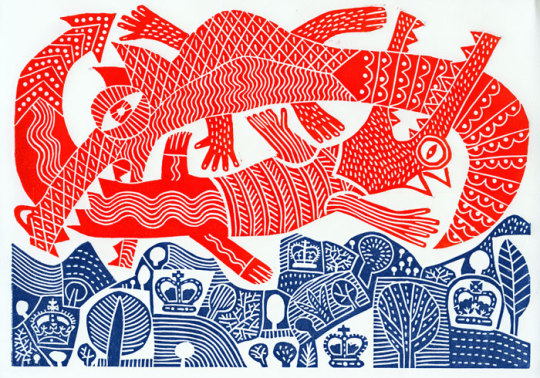
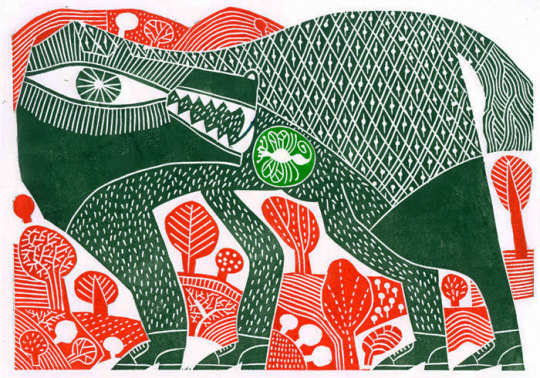
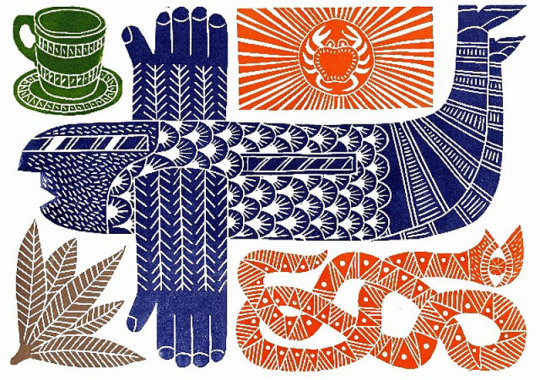



David Jones (b 1939) graduated from Liverpool College of Art in 1961 and it was here he first discovered his interest in printmaking. His tutor was the surrealist artist George Jardine. He won a John Moores travelling scholarship and spent time visiting various design studios across Europe. On returning to the UK he worked as assistant to graphic designers Jock Kinneir and Margaret Calvert. In 1965 -1967 he worked in Japan at Nakamoto International Agency, Osaka.
He returned to the UK and had a busy and successful career working freelance in graphic design, illustration and typography. He also worked as a visiting college lecturer at many of the countries leadings art schools. From 1979 he was a Senior Lecturer at Central Saint Martins (University of The Arts, London). In the last twenty years he has returned to printmaking, in particular linocuts and wood engraving. He is influenced by Outsider art and Folk art. In 1989 he helped set up Raw Vision, a journal of Outsider Art. David is also a keen Semi-pro musician and plays the soprano saxophone. He hand prints his work in small editions and many of the images in his prints come from dreams.
https://www.emmamason.co.uk/a/david-jones?pgs=2
149 notes
·
View notes
Text
Disrupt
to me, disrupt referred to the disruptions that i had witnessed in my college accommodation. moving from a very small village in roscommon to a populated area like limerick was a huge change. i went from living with my parents and my dog to living with a group of students whom i had never even met before. i found that solid and lasting friendships could be made but disagreements were unavoidable. a lot of things happened in the first semester that really showed that we all were young and prone to making mistakes. some things caused more of an issue than others like when my housemates friends destroyed our house and slept in my bed without permission. some things were much more personal like the comments one of my housemates made about me that were really unkind and his throwing out of some of my pieces of art. however, i acknowledge that i, too, was part of the problem at times like when my friends would take drinks from the kitchen that belonged to others.
i began my project exploring the disruptions of peoples features hoping to learn more about the art of caricatures and cartoon-esque drawing. yet i felt this aspect wasn’t really inspiring me and i kept getting stuck in a rut. i took a risk and looked at other avenues. i thought about how i was trying to draw those around me, the people i lived with, and then i thought about how they could be disruptive instead of me disrupting them. i think we can all agree that a house full of 17, 18, and 19 year olds is truly a house of disruption.
the idea to create road signs with cautions based on the disruptions in our house came to me just after my birthday party. there was an incident in the house where our couch was used in a way that none of us wanted it to. one of my housemates joked, saying “we need to find a way to stop this from happening again” and i answered “i should make a sign”. my housemates agreed that it would be very funny and useful if there was a sign and i thought it would be a perfect way to take my project to the next level.
my favourite sector of art would have to be typography. i remember beginning to learn about it in art class in secondary school and immediately falling in love. i’ve always loved recreating fonts and even making new ones. i knew signage was a great route for me as it had an aspect of language and typography with the phrases written. i really enjoyed trying to replicate the writing on signs and seeing what different fonts looked like on a regular sign.
i spent a lot of time looking at road signage from driving almost 3 hours down to college every weekend and also going on walks, photographing what i’d see. i loved the vibrant and contrasting colours and how they created a striking image in a landscape. i used my photographs to help me when i’d make a sign to make sure it would look realistic. at one point me and my friends tried to acquire a real sign from the side of the road but unfortunately our heist was cut short because the boot of my car was not big enough. this actually led to me playing with scale and making a 3D sign out of cardboard that was actually taller than me. it was really interesting seeing what a sign would look like in such a large scale when i compared it to the smaller signs i had made. i thought about the meaning and how maybe bigger signs could mean there was a bigger problem.
i looked at a lot of different artists and designers to help with my work like kathy predergast, margaret calvert, and tracey emin. i felt that i really related to the work of these artists and found similarities between the meanings of our work. margaret calvert proved to be a huge help as she was credited with creating most road signs. i also found a lot of inspiration from books in the library. i checked out many on colour and on international forms of signage. they were very interesting and provided a basis for my sign work.
in conclusion, disrupt became almost a self reflection for me. i was able to see what me and my housemates were doing wrong and try to rectify it in a comical way. i really enjoyed creating these signs and learning about how original road signage was made. if i had more time i think i would try levelling up my signage and possibly creating metal ones with vinyl on top. i think vinyl printing would be an interesting skill to learn. id also like to look more into photography and expressing my artistic view through photos of the disruptions in my house. i would also try to almost interview other people and see what the disruptions of their college accommodation would be. i found a lot of people felt my project was actually quite relatable. it would be interesting to see which accommodation has the most disruptions, and possibly make a map of the worst spots, similar to kathy predergast’s ‘lost’.
0 notes
Text
Disrupt Project Week 6 -
13/11/23
Artist Research:
Margaret Calvert
Margaret Calvert, born 1936, is a British typographer and graphic designer who, with colleague Jock Kinneir, designed many of the road signs used throughout the United Kingdom, Crown Dependencies, and British Overseas Territories, as well as the Transport font used on road signs, the Rail Alphabet font used on the British railway system, and an early version of the signs used in airports.
She provided signing programmes for British rail, motorways, airports authority and the all-purpose roads among other things. Besides, she also served as a part-time teacher between 1961 and 2001, at the Royal College of Art.
Calvert also created easy-to-understand pictograms based on pre-existing European warning signs. These pictorial instructions for road users included the signs for crossing of livestock animals that was modeled after Patience and schoolchildren nearby was depicted through a girl leading a boy by hand. Over the decades the sign system has been modified in accordance with the road users’ needs. However, Calvert and Kinneir’s design is still at its core.
Her work has been a pivotal landmark in powerful and important signage to promote road safety.




0 notes
Text

Road Signs, Margaret Calvert (1965).
This lady designed British road signs as we know them now. Absolute icon
0 notes